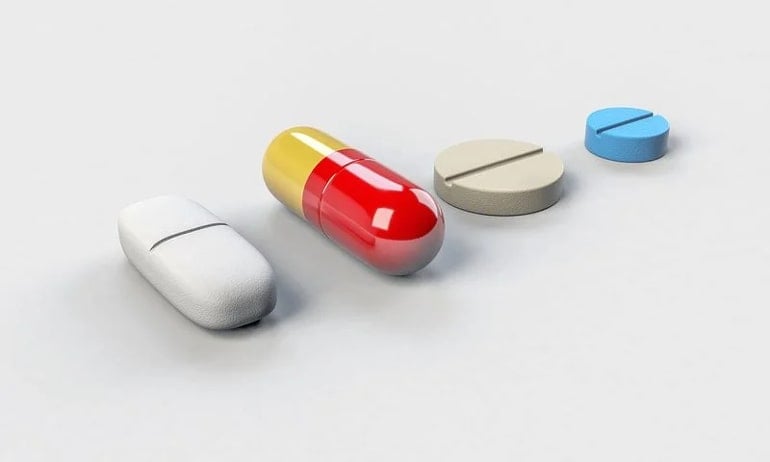Summary: Diphenylbutylpiperidines (DPBPs), an older class of antipsychotic medications can effectively be repurposed to help treat type 2 diabetes, a new study reports.
Source: University of Alberta
Researchers have found that a class of older antipsychotic drugs could be a promising new therapeutic option for people with type 2 diabetes, helping fill a need among patients who aren’t able to take other currently available treatments.
“There is a growing need to find new therapies for type 2 diabetes,” says John Ussher, professor in the Faculty of Pharmacy & Pharmaceutical Sciences and lead author of the recent study published in the journal Diabetes.
As Ussher explains, the drug metformin is one of the most common therapeutics for type 2 diabetes, but about 15 percent of patients aren’t able to take it. Another type of commonly used drug class (insulin secretagogues) to treat diabetes isn’t as effective for later-stage patients, who also need a different option.
“For the patients who can’t take metformin, patients with late-stage diabetes where their beta cells aren’t working as well, when you’re trying to find new therapies or new combination therapies as the disease progresses, it becomes more important to find new drug classes that target new mechanisms so then you have more options to try and lower blood sugar in those individuals,” Ussher explains.
The mechanism Ussher and his team turned their attention to is succinyl CoA:3-ketoacid CoA transferase (SCOT), an enzyme involved in the body’s process of making energy from ketones.
They used computer modeling to find drugs that could potentially interact with SCOT and landed on an older generation of antipsychotic drugs, a drug class called diphenylbutylpiperidines, or DPBP for short.
Ussher and his team had previously found that a specific drug within this class called pimozide could be repurposed to help treat diabetes, but they’ve since expanded their focus to see whether more of the DPBP class could also be useful for treating the disease.
“We’ve tested three drugs now, and they all interact with this enzyme,” says Ussher. “They all improve blood sugar control by preventing the muscle from burning ketones as a fuel source.”
“We believe this SCOT inhibition is the reason these antipsychotics might actually have a second life for repurposing as an anti-diabetic agent,” he adds.
Fast-tracking drug development
Developing a drug is a complicated, time-consuming and expensive process. It involves clinical trials to test the safety and efficacy of the drug, and can easily cost hundreds of millions of dollars. Not to mention, it can take years to go from development in the laboratory to use in the clinic or hospital. Repurposing an existing drug may help fast-track the process, Ussher notes.
“With something that’s an older drug which we used historically in humans that we no longer use, we know what the adverse effects are, we know in general that it’s safe,” he says.
Though clinical trials are still needed, repurposing a drug allows researchers to focus specifically on the efficacy and safety of the new intended use—offering the potential to provide a new therapeutic more quickly and cost-effectively.
“As you already have safety data, it somewhat accelerates the process,” says Ussher. “And from an economic standpoint, often because a lot of these drugs being pursued for repurposing are older, they’re off patent and cheaper.”
Finding a new target
Repurposing is effective because it capitalizes on a main characteristic of most drugs—they’re not restricted to just one target in the body. As Ussher explains, most drugs actually have numerous targets they can influence.

“That’s where repurposing comes in,” he says. “Can we identify the other targets that a drug may interact with, and by identifying those other targets, can this drug serve a purpose for a different disease?”
This is what Ussher’s lab did in recognizing the DPBP drug class could target SCOT activity as well as the dopamine receptors it targets in its original intended use to treat psychosis.
Knowledge of these original targets can also provide valuable context when refining and improving the repurposed drug. Since DPBP drugs were originally antipsychotics, many of their potential side-effects such as drowsiness, dizziness or fatigue arise from their effects on their original target: the dopamine receptors in the brain.
Ussher’s lab is planning to try creating a modified version of the drug class that doesn’t reach the brain and has fewer potential adverse effects.
“For us, the excitement is that it looks like the entire family of these compounds interacts with this protein [SCOT] and can improve blood sugar control in type 2 diabetes.”
About this neuropharmacology and diabetes research news
Author: Adrianna MacPherson
Source: University of Alberta
Contact: Adrianna MacPherson – University of Alberta
Image: The image is in the public domain
Original Research: Open access.
“The Antipsychotic Dopamine 2 Receptor Antagonist Diphenylbutylpiperidines Improve Glycemia in Experimental Obesity by Inhibiting Succinyl-CoA:3-Ketoacid CoA Transferase” by Seyed Amirhossein Tabatabaei Dakhili et al. Diabetes
Abstract
The Antipsychotic Dopamine 2 Receptor Antagonist Diphenylbutylpiperidines Improve Glycemia in Experimental Obesity by Inhibiting Succinyl-CoA:3-Ketoacid CoA Transferase
Despite significant progress in understanding the pathogenesis of type 2 diabetes (T2D), the condition remains difficult to manage. Hence, new therapeutic options targeting unique mechanisms of action are required.
We have previously observed that elevated skeletal muscle succinyl CoA:3-ketoacid CoA transferase (SCOT) activity, the rate-limiting enzyme of ketone oxidation, contributes to the hyperglycemia characterizing obesity and T2D.
Moreover, we identified that the typical antipsychotic agent pimozide is a SCOT inhibitor that can alleviate obesity-induced hyperglycemia.
We now extend those observations here, using computer-assisted in silico modeling and in vivo pharmacology studies that highlight SCOT as a noncanonical target shared among the diphenylbutylpiperidine (DPBP) drug class, which includes penfluridol and fluspirilene. All three DPBPs tested (pimozide, penfluridol, and fluspirilene) improved glycemia in obese mice.
While the canonical target of the DPBPs is the dopamine 2 receptor, studies in obese mice demonstrated that acute or chronic treatment with a structurally unrelated antipsychotic dopamine 2 receptor antagonist, lurasidone, was devoid of glucose-lowering actions.
We further observed that the DPBPs improved glycemia in a SCOT-dependent manner in skeletal muscle, suggesting that this older class of antipsychotic agents may have utility in being repurposed for the treatment of T2D.






